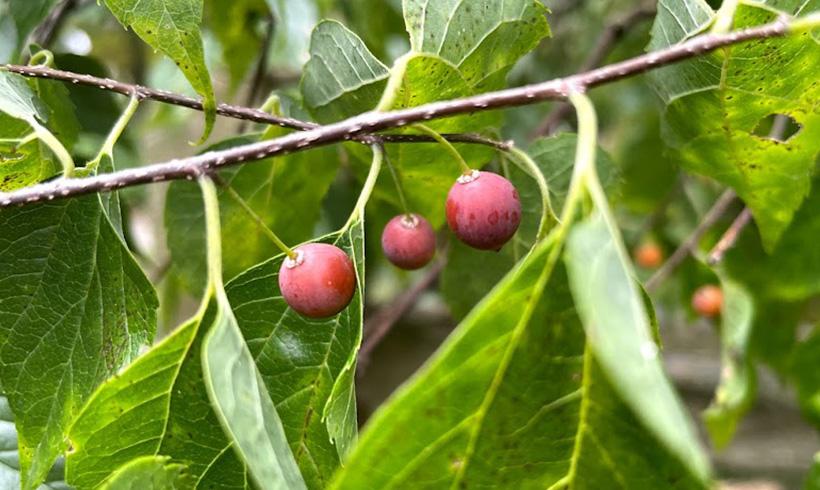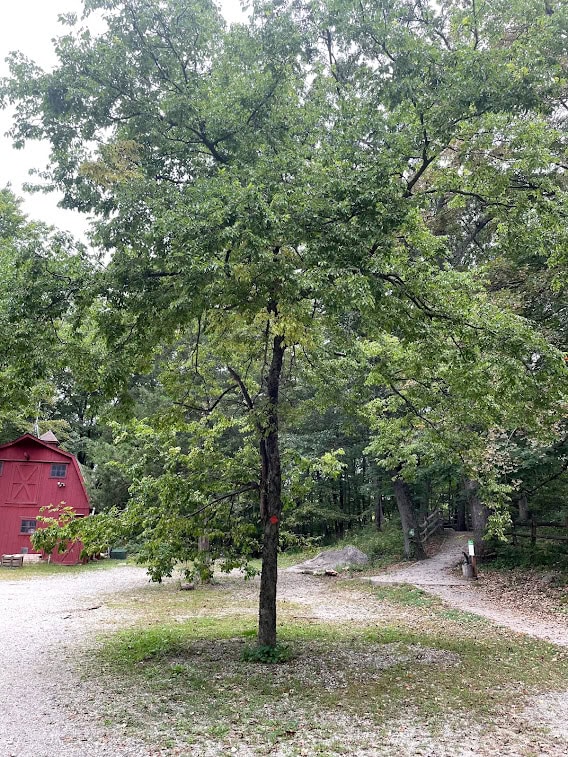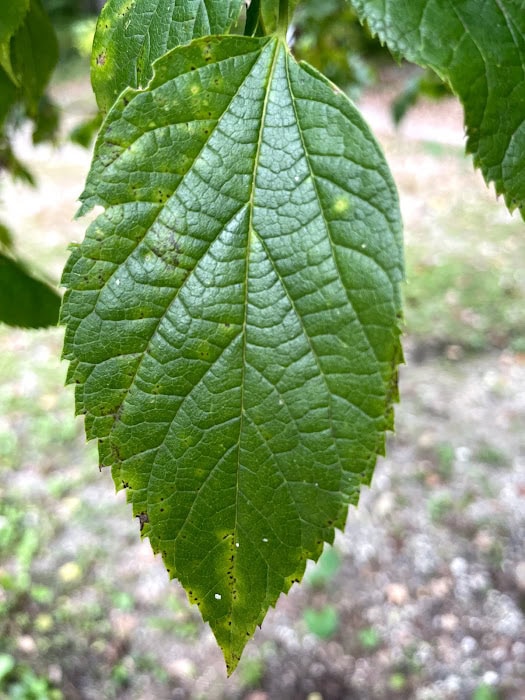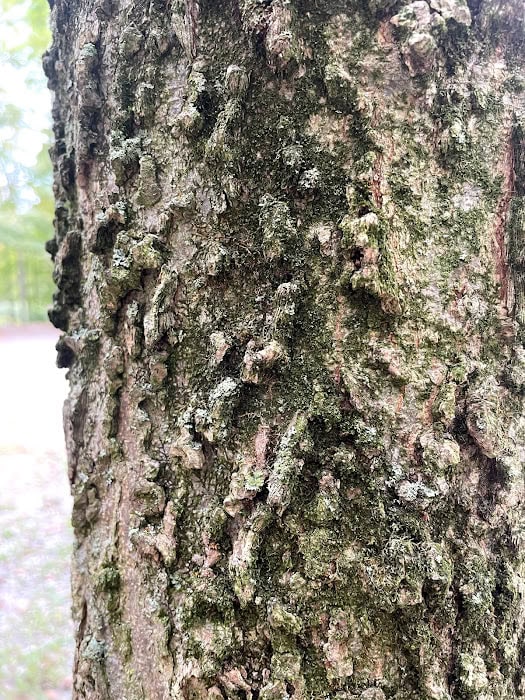The Humble Hackberry
The common hackberry (Celtis occidentalis) is an understated and unsung hero of the local landscape. Beautiful, hardy, and beneficial—this tree offers much to the homeowner, city dweller, and wild creatures alike!

The common hackberry is in the same family as the American elm (Ulmus americana). Its form is very similar to the elms’ graceful, vase-like shape, with a rounded crown. Luckily, the hackberry is not susceptible to the Dutch elm disease that decimated the American elm population in the 1950s. In more recent times, hackberries have been a choice tree to plant in urban settings because of their hardiness of tolerating heat, salt, and air pollution while providing critical shade.
Hackberries grow as tall as they do wide, reaching up to 40 to 60 feet in height and width (crown spread). Their most notable identifying feature is the knobby and warty bark, unlike any of the other trees in our forest. The leaves are asymmetrical, toothed, and longer than they are wide. Their flowers are green and inconspicuous-appearing after leaf-out in early spring. Male and female flowers are separate, but on the same tree or monoecious. The fruits look like small purplish-brown cherries in the fall, hanging singly along its zig-zagging branches.



Preferring full sun, hackberries are known to be alleopathic. This means they have a chemical cocktail of phenolic phytotoxins that leach into the surrounding soil from their downed and decaying leaves which inhibits the growth of other plant species. Although hackberries make life difficult for other plants, they provide life for many different wildlife creatures. Hackberries are a host to numerous butterflies: mourning cloak (Nymphalis antiopa), question mark (Polygonia interrogationis), and tawny emperor (Asterocampa clyton). Other insects, like psyllids or plant lice, lay eggs on the leaves, initiating gall formation, a tidy home until the new insect emerges. The small hackberry fruit is enjoyed by many species of birds: cedar waxwings, Northern flickers, yellow-bellied sapsuckers, mockingbirds, robins, and wild turkeys. Raccoons, opossums, gray foxes, and gray and flying squirrels will all partake of its delicious drupes.
The humble hackberry is a tree that deserves to be boosted. This is one tough tree and a tremendous provider for wildlife. If you are planning to plant a tree for wildlife, consider the hackberry…your wild neighbors will thank you!

About the Author
Maggie Pichura
Senior Environmental Educator
Maggie is a graduate of SUNY Environmental Science and Forestry (ESF) and has been teaching environmental education for 20 years. Although she loves all aspects of nature, her personal passions are birds and native wildflowers. Participating in trail marathons allows her lots of time on trails to train and look for these gems!


Leave a Reply